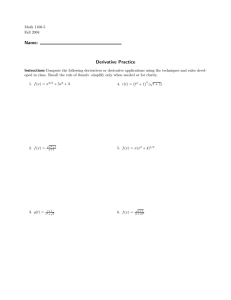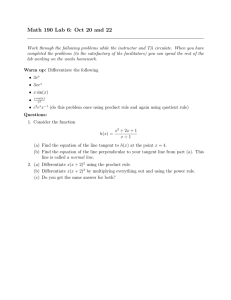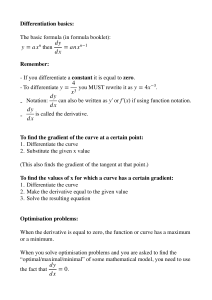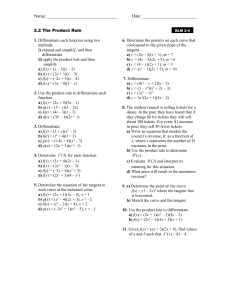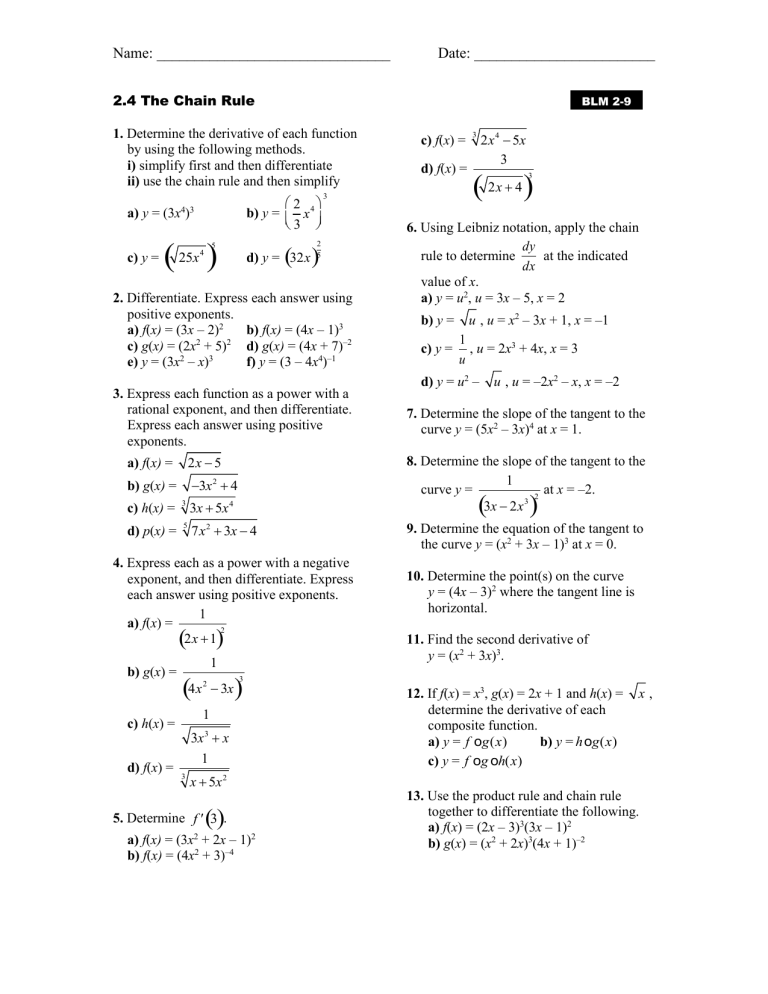
Name: _______________________________ Date: ________________________ 2.4 The Chain Rule …BLM 2-9. . 1. Determine the derivative of each function by using the following methods. i) simplify first and then differentiate ii) use the chain rule and then simplify 2 b) y = x 4 3 4 3 a) y = (3x ) 25x c) y = 4 d) y = 32x 2 5 2. Differentiate. Express each answer using positive exponents. a) f(x) = (3x – 2)2 b) f(x) = (4x – 1)3 2 2 c) g(x) = (2x + 5) d) g(x) = (4x + 7)–2 e) y = (3x2 – x)3 f) y = (3 – 4x4)–1 3. Express each function as a power with a rational exponent, and then differentiate. Express each answer using positive exponents. a) f(x) = 2x 5 b) g(x) = 3x 2 4 3x 5x 4 d) p(x) = 5 7x 3x 4 2 4. Express each as a power with a negative exponent, and then differentiate. Express each answer using positive exponents. 1 a) f(x) = 2 2x 1 4x 1 3x 3x 3 x 1 3 3 6. Using Leibniz notation, apply the chain dy rule to determine at the indicated dx value of x. a) y = u2, u = 3x – 5, x = 2 b) y = c) y = u , u = x2 – 3x + 1, x = –1 1 , u = 2x3 + 4x, x = 3 u d) y = u2 – u , u = –2x2 – x, x = –2 7. Determine the slope of the tangent to the curve y = (5x2 – 3x)4 at x = 1. 9. Determine the equation of the tangent to the curve y = (x2 + 3x – 1)3 at x = 0. 10. Determine the point(s) on the curve y = (4x – 3)2 where the tangent line is horizontal. 11. Find the second derivative of y = (x2 + 3x)3. 3 1 c) h(x) = d) f(x) = 2 2x 4 3 b) g(x) = d) f(x) = 8. Determine the slope of the tangent to the 1 curve y = at x = –2. 2 3x 2x 3 c) h(x) = 3 3 5 2x 4 5x 3 c) f(x) = 12. If f(x) = x3, g(x) = 2x + 1 and h(x) = determine the derivative of each composite function. a) y = f og(x) b) y = hog(x) c) y = f og oh(x) x, x 5x 2 5. Determine f 3 . a) f(x) = (3x + 2x – 1)2 b) f(x) = (4x2 + 3)–4 2 13. Use the product rule and chain rule together to differentiate the following. a) f(x) = (2x – 3)3(3x – 1)2 b) g(x) = (x2 + 2x)3(4x + 1)–2
